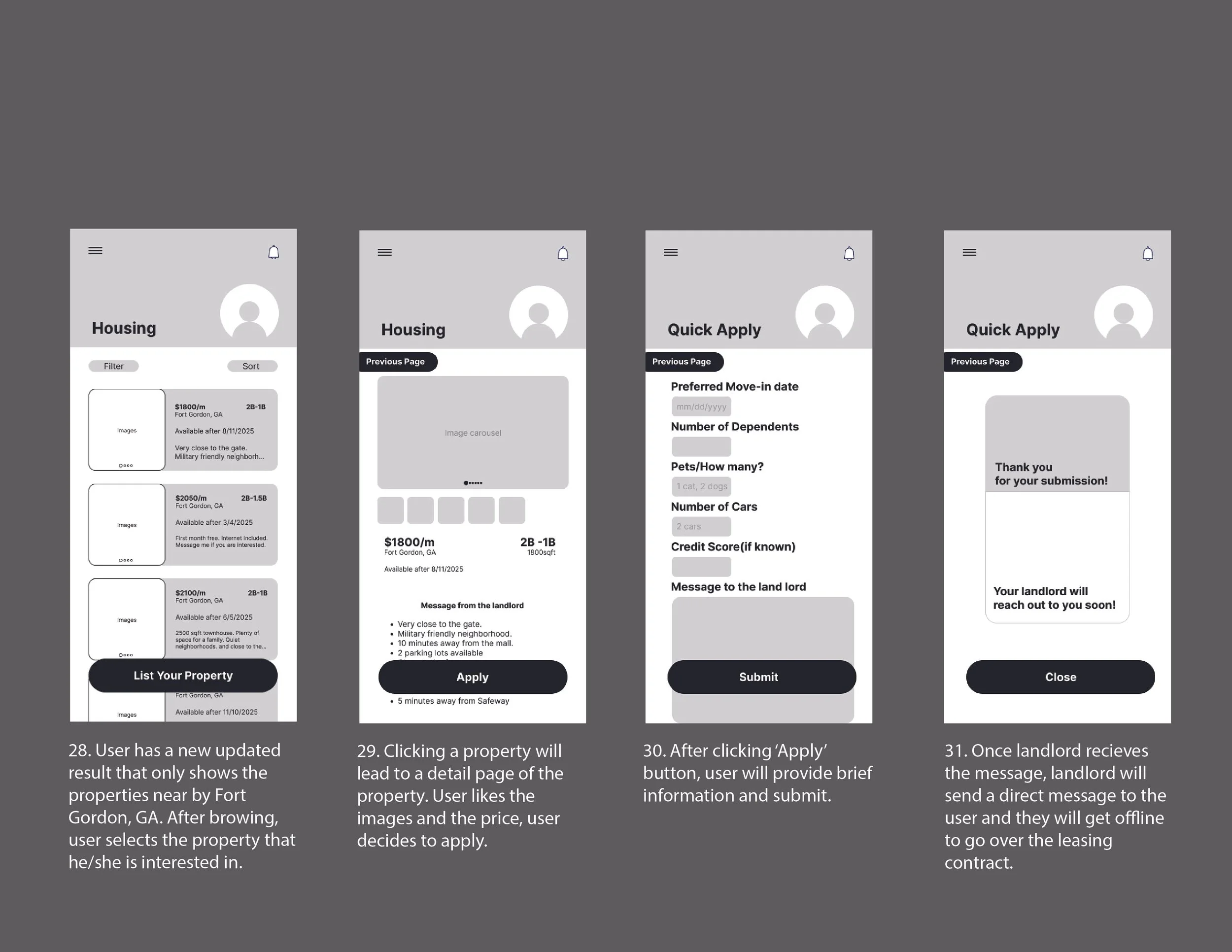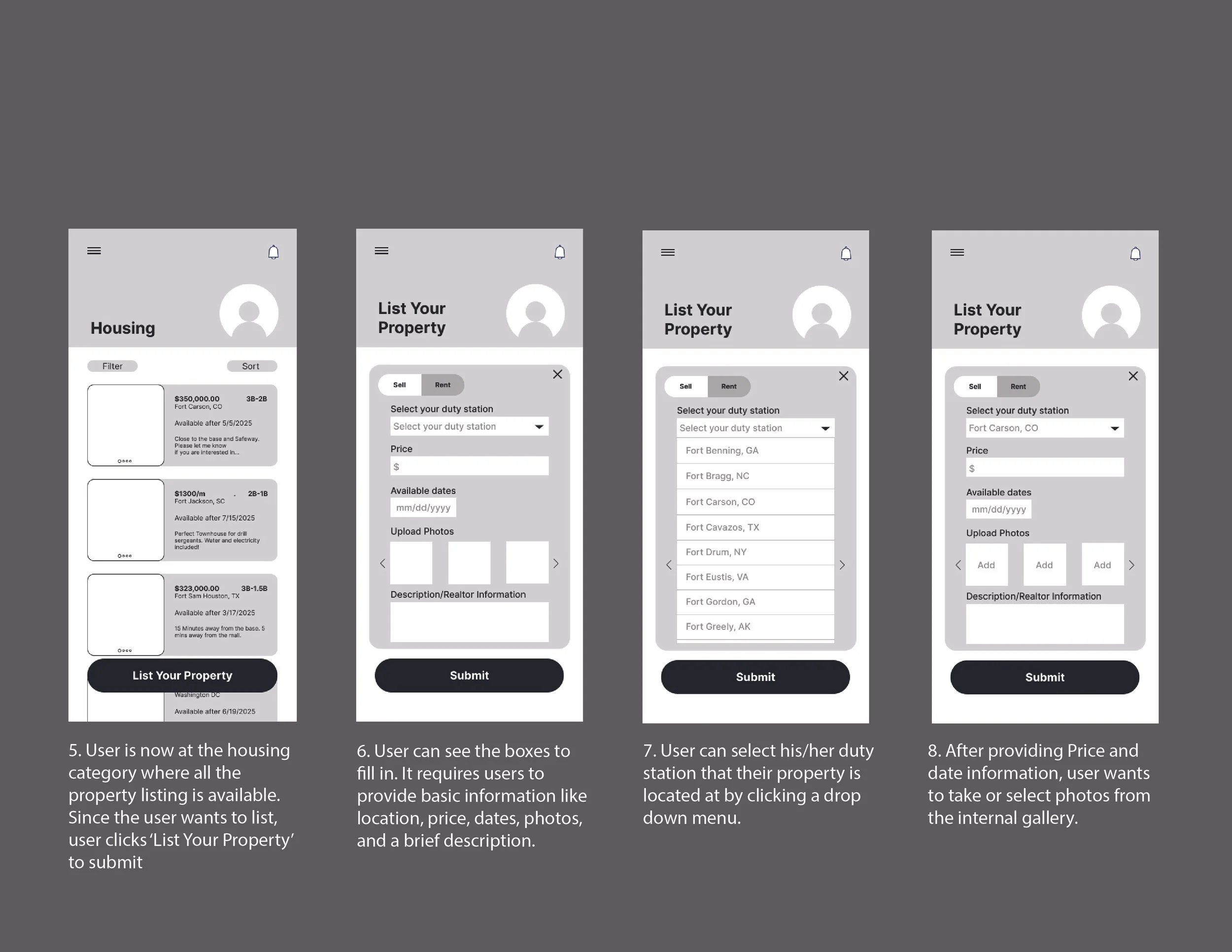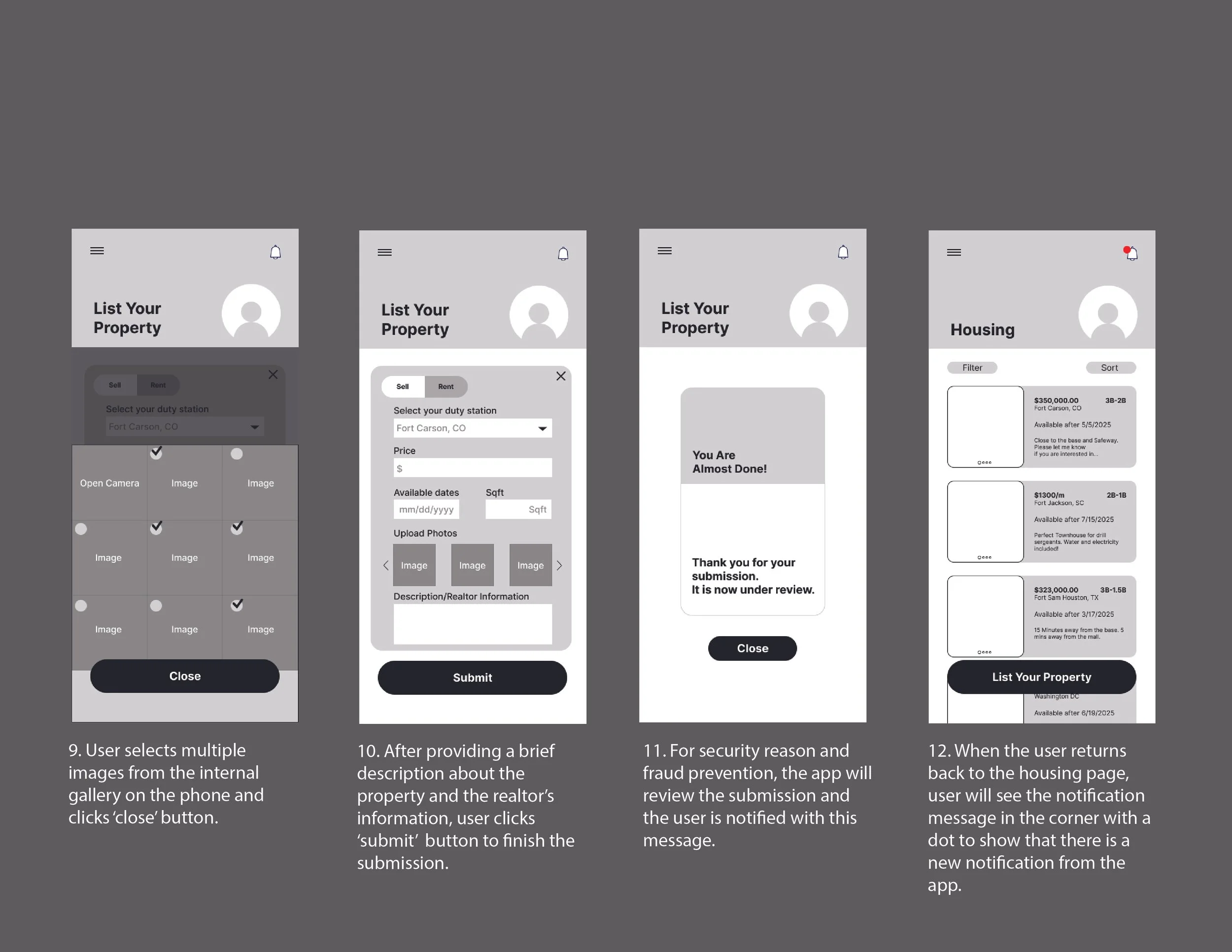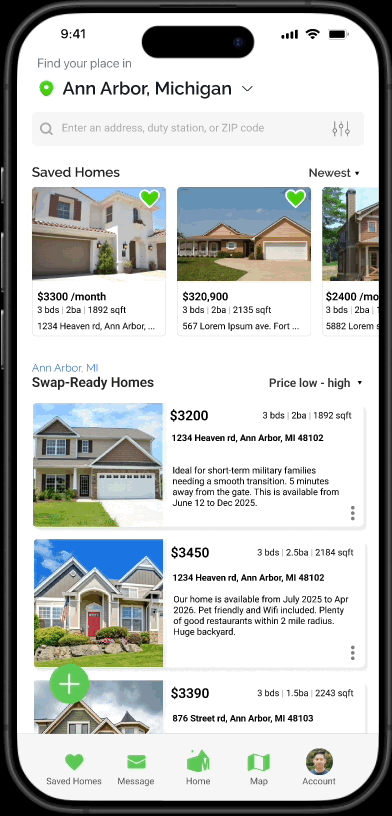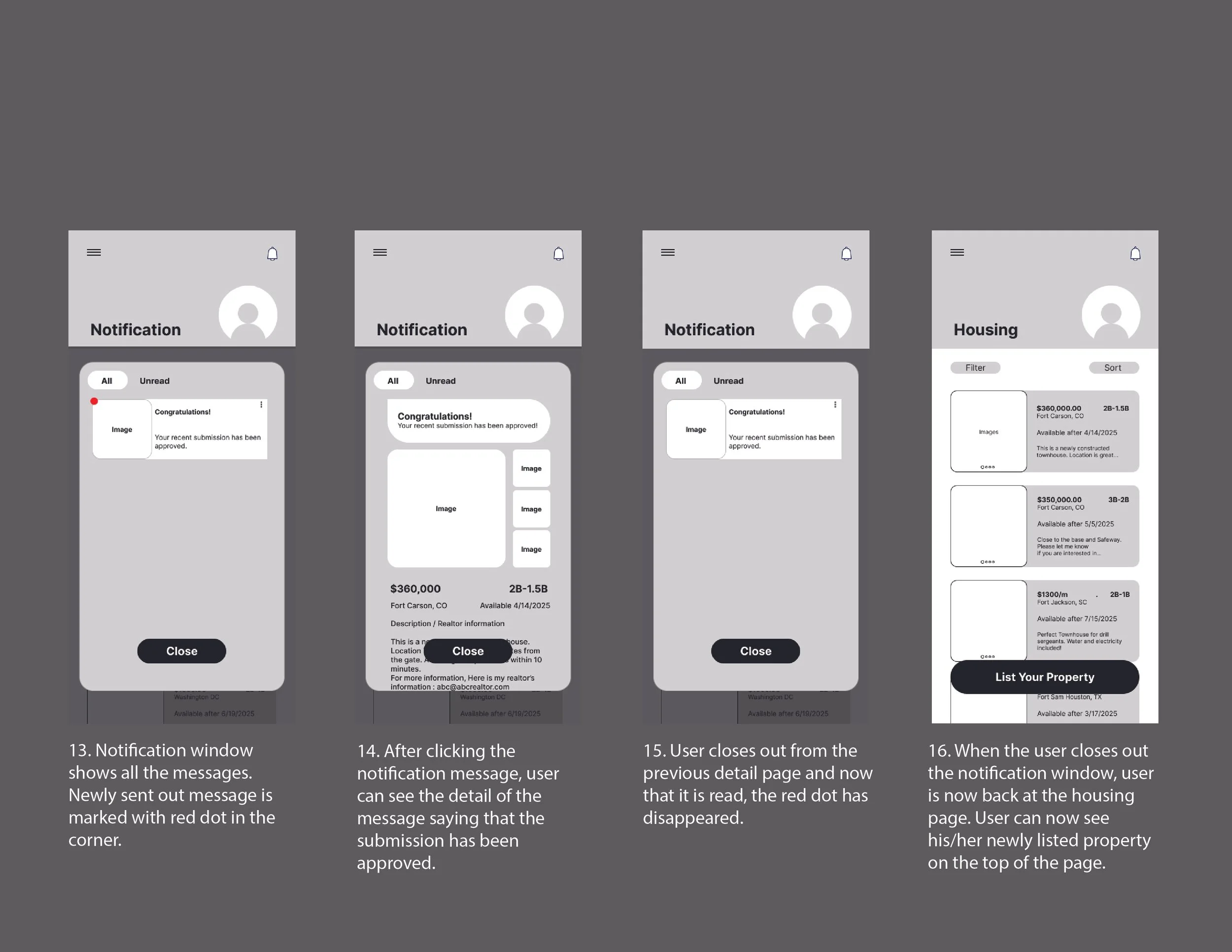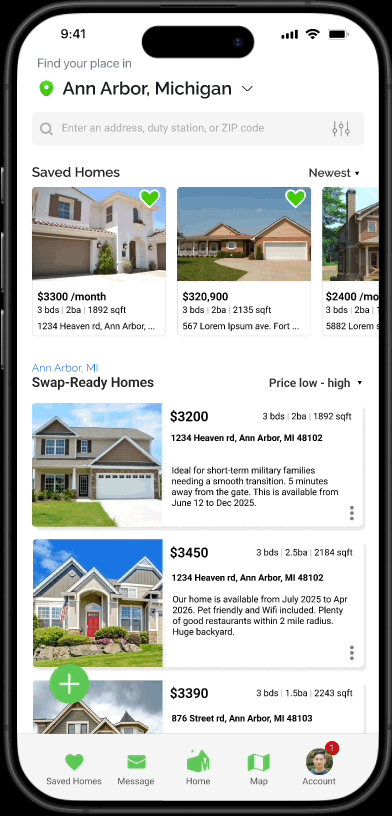Overview
MILMOVE
Developing the housing feature of the app to help military personnel
Military personnel face frequent relocations, creating a need for easy access to used vehicles, temporary housing, and specialized gear—necessities that a trusted marketplace can provide. Due to time constraints this semester, I'm focusing on the housing feature to streamline finding and swapping homes for service members in transition.
Project
Case Study
Research Question
"How might we create a solution that helps military families efficiently buy, sell, rent or swap homes while considering the challenges of frequent relocations and short-term assignments?"
Methodologies
Interview
I conducted interviews with both primary and secondary personas to gain insights into their needs, pain points, and behaviors. Based on these findings, I developed a user flow, created wireframes, and designed interactive prototypes to visualize and refine the user experience.
Define Research Question
Interview
Persona
User Flow
Dream it
Comparative Analysis
Paper Prototype
Wireframes
Low & Hi Fidelity
Usability Test
Define Research Question Interview Persona User Flow Dream it Comparative Analysis Paper Prototype Wireframes Low & Hi Fidelity Usability Test
I conducted interviews with two soldiers and one military spouse to gain a deeper understanding of their experiences and challenges related to military relocations. My goal was to identify their pain points, needs, and expectations regarding the moving process, including aspects such as planning, logistics, housing, transportation, and military support services.
By interviewing both service members and a military spouse, I aimed to explore different perspectives, how soldiers handle PCS (Permanent Change of Station) moves, what difficulties they face in coordinating their relocations, and how spouses experience and manage the transition. These insights helped inform my user flow, wireframes, and interactive prototypes, ensuring that the app effectively addresses the unique challenges of military moves.
Key Findings from Interviews
Logistical Coordination Difficulties
Coordinating moves with deployment schedules is a major stressor.
Example: One participant stated, “The most challenging part is coordinating the move with my deployment schedule.”
Housing decisions are often made with incomplete or outdated information, making remote housing selection difficult.
Managing vehicle sales or storage within tight timelines adds to the stress.
Issues with Existing Digital Platforms
Current platforms like Craigslist and Facebook Marketplace are seen as unreliable and unsafe.
Example: One participant mentioned, “Craigslist feels outdated and unsafe.”
Users experience deals falling through and difficulties navigating disorganized listings.
There is a need for a secure, military-focused platform tailored to relocation needs.
Importance of Military Community Support
Military families rely on local military communities for relocation assistance, tips, and shared resources.
Example: One interviewee shared, “I’d focus on getting help from the local military community. They’re great for sharing tips and resources quickly.”
Supplementary research indicates that military families move approximately every 2.5 years, often incurring financial losses due to rushed decisions (Military Family Advisory Network).
Implication for the platform
These findings will shape the MilMove app to better support military families during relocations. To streamline logistics, it will feature verified housing listings and vehicle storage management tools, reducing rushed decisions. For security, it will provide a safer, more reliable alternative to platforms like Craigslist and Facebook Marketplace. Additionally, it will integrate community-driven features to connect users with local military support groups and shared resources. By combining these elements, MilMove aims to simplify moves, enhance trust, and foster a supportive network for service members and their families.
Userflow
Wireframes
Hi Fidelity Prototype
Industry
Housing
Role
Product Designer
Responsibilities
UX Research, User Interviews, UI Design, Usability Test
Timeline
Jan 2025 - Apr 2025





